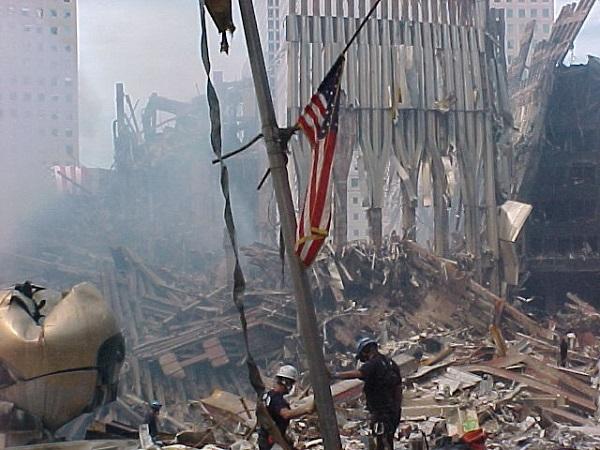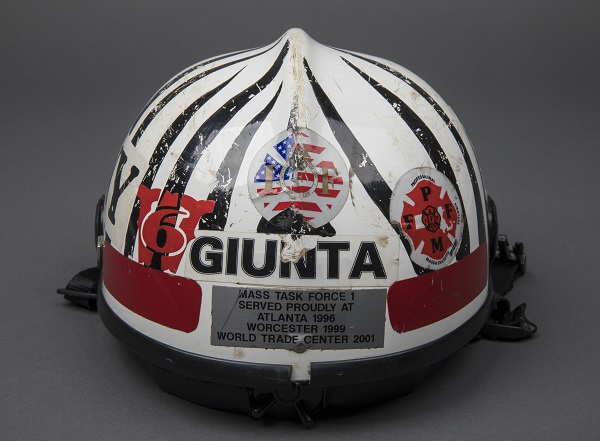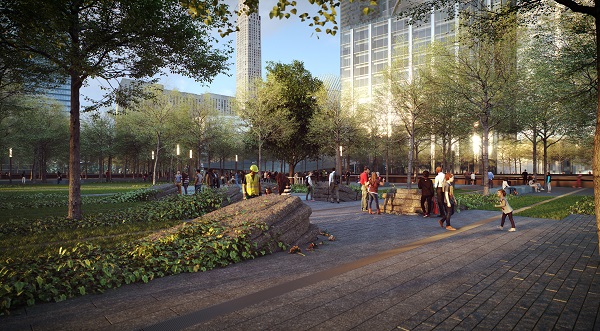Photo Archive Shows Dedication of Rescue and Recovery Workers
Photo Archive Shows Dedication of Rescue and Recovery Workers

A family celebration in honor of his 43rd birthday on the evening of Sept. 10, 2001, led Donald Anderson to call his supervisor the following morning to request the day off. As a quality assurance specialist at New York City’s Department of Design and Construction, Anderson usually worked from a mobile lab to test the quality of concrete, asphalt and other materials being used in civic highway projects around the city.
Hours after that phone call on the morning of 9/11, the city agency responded to the attacks at the World Trade Center. Volunteering to head downtown from his home in Harlem, Anderson was told to await further instructions, which came early the following day, Sept. 12. At 7:00 a.m., he heard from his supervisor: report to Ground Zero to relieve a coworker who had been at the disaster site all day and overnight.
Anderson worked at the site for seven days, maintaining a Mobile Field Office Emergency Unit. Operating in 12-hour shifts, Anderson and his coworkers kept generators fueled and running, re-charged radios, computers and cell phones needed by responders, and distributed work gloves, dust masks and other emergency supplies.
He also welcomed many who needed a place to sit for a few minutes after toiling in the wreckage. The horror and scope of the devastation, along with the spirit of cooperation and compassion that he witnessed, prompted him to bring his camera to the site.
He hoped that the photographs might one day communicate to 9/11 family members the dedication and caring that characterized the rescue and recovery efforts. He also wanted to make sure that children too young to understand what had occurred, including his own, as well as those not yet born, would understand what had happened that day.
Anderson shared his archive with the 9/11 Memorial Museum almost as soon as we began collecting photographs and artifacts. His photographs document the people he saw and chronicle the efforts they made to address the incomprehensible destruction. Anderson also recorded an oral history in which he shared his memories of working at the site, the gratitude he felt toward the volunteers supporting the rescue and recovery, and how his life was affected by his service at Ground Zero.
A selection of Anderson’s photos will be projected on the slurry wall on May 30 when the 9/11 Memorial & Museum marks the 16th anniversary of the end of the World Trade Center rescue, recovery and relief operation. The special ceremony will be held at the Last Column in Foundation Hall to honor the sacrifices and selfless contributions of rescue and recovery workers and their families.
By Amy Weinstein, Vice President of Collections & Oral History, 9/11 Memorial Museum
Previous Post
Hardhats of the Rescue and Recovery Effort

Ubiquitous in demolition and construction sites, hardhats are used both for safety and for identification purposes. The 9/11 Memorial Museum collection is home to several hardhats used during the rescue and recovery effort that followed the Sept. 11 attacks.
Next Post
Design Unveiled for Historic Evolution of 9/11 Memorial

The 9/11 Memorial & Museum unveiled the design for the historic evolution of the 9/11 Memorial on Wednesday, the 16th anniversary of the formal end of rescue and recovery operations at Ground Zero.